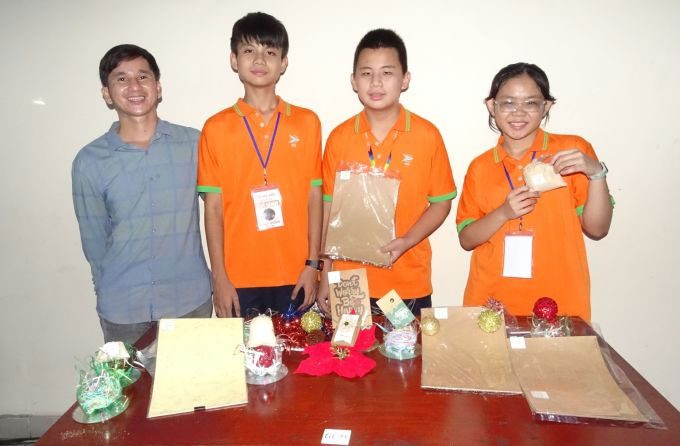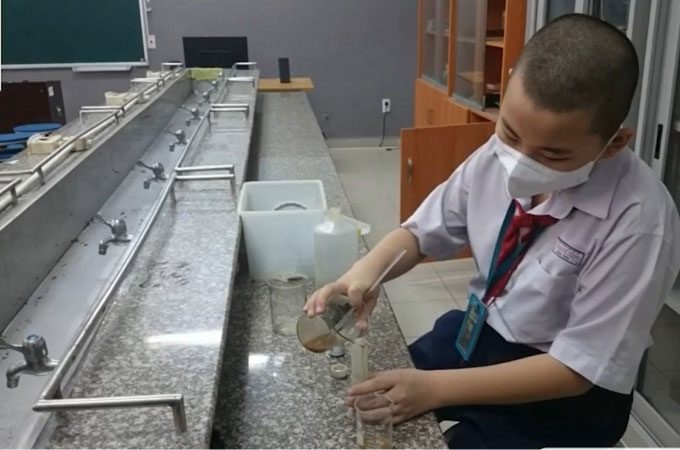Students from Ly Thanh Tong Middle School in District 8 use durian peels to create naturally fragrant paper, helping to utilize agricultural by-products.
The product was developed by To Dinh Hong Phuc, Lai Huynh Nhat Thong, and Nguyen Ngoc Bich Han (9th grade), with the goal of using new materials to replace wood in the paper production process.

Three team members and teacher Phan Duy Hiep (left) introduce their durian peel paper product at the 2022 Startup Idea Competition organized by the Startup and Innovation Center of the National University of Ho Chi Minh City. (Photo: Ha An)
Hong Phuc stated that paper is typically made from wood, which harms the environment. Meanwhile, durian peels are waste material after consuming the fruit, making it very wasteful. The team sought to utilize durian peels and researched previous studies on this fruit. Studies show that durian peels contain 60 – 70% cellulose, comparable to various types of wood currently used. Additionally, durian peels have a pleasant aroma, making them suitable for paper production.
Under the guidance of their teacher, the team began developing a paper production process from durian peels in the school laboratory starting in June. Taking advantage of recess and lunch breaks, the three members visited food stalls and fruit vendors to collect durian peels as raw material.
The durian peels were washed, chopped, and dried in the sun. On days without sunlight, they used a drying machine to achieve the right crispness for the material. Once the durian peels were sufficiently dried, they were ground into a fine powder and mixed with some additives to enhance adhesion. This mixture was then pressed into molds to create the finished paper. “The team took about 4 days to complete the entire process,” Bich Han, a team member, said. The product has a glossy finish, the aroma of durian peels, and decomposes faster due to the lower content of adhesive substances in the paper.
The product can be used to create notebooks, greeting cards, or other stationery items. The team plans to market it to stationery stores at a price of 2,000 VND per A4 sheet. They hope to receive support from businesses for experimental production to assess the quality of the final paper and verify the project’s feasibility.
To diversify their raw material sources, the team intends to continue developing the project by creating paper products from pomelo peels, orange peels, and more.

Hong Phuc preparing the material in the school laboratory. (Photo: Provided)
Master Phan Duy Hiep, a biology teacher at Ly Thanh Tong Middle School, evaluated that the students approached a practical issue by addressing agricultural by-products. The steps from sourcing materials to creating the paper-making process and the final product demonstrate their diligence in research, an important trait for scientists. “The most important aspect of this product is the formula for using additives to create paper material with a beautiful gloss and quality equivalent to current paper,” Master Hiep said.
In reality, paper pulp is produced from various materials such as wood, cotton fibers (with seeds), recycled paper, fabric, straw, grass, flax, hemp, jute, and sugarcane bagasse, using mechanical, chemical, and semi-chemical methods.



















































